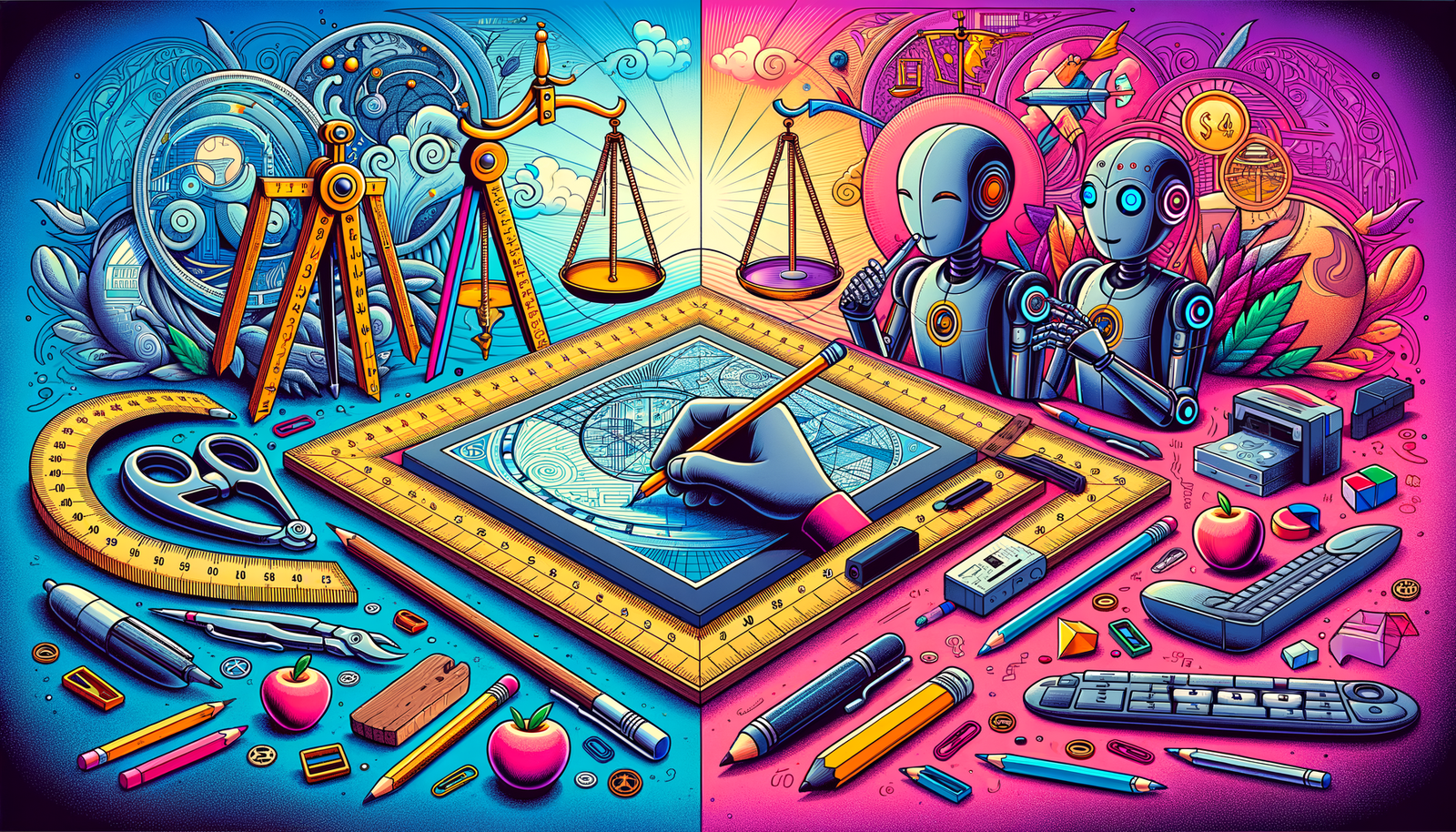Your Cart is Empty
Customer Testimonials
-
"Great customer service. The folks at Novedge were super helpful in navigating a somewhat complicated order including software upgrades and serial numbers in various stages of inactivity. They were friendly and helpful throughout the process.."
Ruben Ruckmark
"Quick & very helpful. We have been using Novedge for years and are very happy with their quick service when we need to make a purchase and excellent support resolving any issues."
Will Woodson
"Scott is the best. He reminds me about subscriptions dates, guides me in the correct direction for updates. He always responds promptly to me. He is literally the reason I continue to work with Novedge and will do so in the future."
Edward Mchugh
"Calvin Lok is “the man”. After my purchase of Sketchup 2021, he called me and provided step-by-step instructions to ease me through difficulties I was having with the setup of my new software."
Mike Borzage
Design Software History: Ethical Considerations in the Integration of Artificial Intelligence within Design Software: A Historical Perspective and Future Implications
February 03, 2025 6 min read


Introduction to Ethical AI in Design Software
In the rapidly evolving landscape of design software, the integration of Artificial Intelligence (AI) has ushered in a new era of innovation and efficiency. Ethical AI in the context of design software refers to the development and deployment of AI systems that adhere to moral principles and societal values, ensuring that the technology serves the best interests of users and stakeholders alike. This involves addressing issues such as transparency, fairness, accountability, and privacy within AI-driven design tools. As designers increasingly rely on AI for tasks ranging from generative modeling to predictive analytics, integrating ethical considerations becomes paramount to prevent unintended consequences that could arise from biased algorithms or data misuse.
The importance of embedding ethical considerations into AI-driven design systems cannot be overstated. These systems have the potential to significantly influence design outcomes, impacting industries such as architecture, engineering, and product development. Without a strong ethical foundation, AI in design software could perpetuate biases, infringe on intellectual property rights, or compromise sensitive data. By proactively addressing these concerns, companies can build trust with users, promote social responsibility, and avoid legal pitfalls. Moreover, ethical AI can enhance creativity and innovation by providing fair and unbiased support to designers, leading to more inclusive and diverse design solutions that resonate with a broader audience.
The ethical challenges specific to design software are multifaceted. One major concern is the bias in AI algorithms that can lead to exclusionary design suggestions, inadvertently promoting designs that favor certain demographics over others. Another challenge is the protection of intellectual property, as AI systems may generate designs that closely resemble proprietary works, raising questions about ownership and originality. Data privacy and security also pose significant ethical dilemmas, especially when AI tools process sensitive user information or proprietary project data. Designers and software developers must navigate these challenges carefully to harness the benefits of AI while upholding ethical standards that protect individuals and society at large.
Historical Context and Development
The early incorporation of AI into design software dates back to the late 20th century, marking a transformative period in how designers approached complex problems. Pioneering companies like Autodesk and Dassault Systèmes were at the forefront of integrating AI capabilities into their platforms. Autodesk's introduction of AI-driven features in their AutoCAD software allowed for intelligent design assistance, automating repetitive tasks and suggesting enhancements based on design patterns. Similarly, Dassault Systèmes embedded AI functionalities in CATIA, enabling advanced simulations and predictive modeling. These early integrations, while groundbreaking, surfaced initial ethical considerations as designers grappled with the implications of machine-generated suggestions on creativity and authorship.
During this nascent stage, examples of early ethical dilemmas began to emerge. Designers questioned the extent to which AI should influence the creative process, worrying that overreliance on algorithmic recommendations might stifle innovation or lead to homogenized designs. There were concerns about the transparency of AI algorithms—designers wanted to understand how AI arrived at certain suggestions to ensure reliability and trust in the tools they were using. Furthermore, the data used to train these AI systems often lacked diversity, leading to biased outputs that did not adequately serve all user groups. These challenges highlighted the need for ethical considerations in the development and deployment of AI within design software.
From the 1980s to the present, the evolution of ethical AI in design software has been marked by key milestones and technological advancements. The rise of machine learning and neural networks in the 1990s introduced more sophisticated AI capabilities, enabling software to learn from vast datasets and improve over time. High-profile incidents, such as controversies over AI-generated designs infringing on existing patents, influenced the push for stronger ethical standards. The turn of the millennium saw increased collaboration between tech companies and academic institutions to address these ethical concerns. Initiatives were launched to develop guidelines and best practices for AI ethics in design, reflecting a growing recognition of the importance of this issue in the industry.
Key Ethical Issues in AI-Driven Design
Data privacy and security stand at the forefront of ethical issues in AI-driven design. Design software companies handle a wealth of sensitive information, including proprietary designs, client data, and user behavior analytics. To address and integrate data privacy, companies implement robust encryption protocols, access controls, and compliance with regulations like the General Data Protection Regulation (GDPR). They develop privacy policies that are transparent and provide users with control over their data. However, breaches have occurred, underscoring the need for continuous improvement in security measures. Companies must ensure that AI systems not only protect data but also use it ethically, avoiding unauthorized sharing or exploitation of user information.
Another critical issue is bias and fairness in AI algorithms. AI-driven design tools can inadvertently perpetuate biases present in their training data, leading to outcomes that favor certain groups or perspectives. For instance, an AI tool trained predominantly on Western architectural styles may not adequately support designs rooted in other cultural contexts. Strategies for ensuring fairness and impartiality include diversifying training datasets, incorporating bias detection mechanisms, and involving diverse teams in the development process. Companies are investing in research to identify and mitigate biases, promoting inclusive design practices that reflect a wide range of user needs and preferences.
Intellectual property and ownership rights pose complex challenges in the realm of AI-generated designs. When AI systems create designs, questions arise about who holds the ownership—the user, the developer of the AI, or the AI itself? Legal precedents are still evolving, with debates ongoing about the applicability of existing intellectual property laws to AI-generated content. Designers and companies must navigate these ambiguities carefully. Some strategies include establishing clear terms of use that outline ownership rights and seeking legal counsel to understand the implications of using AI in the design process. The industry continues to advocate for updated laws and guidelines that address the nuances of AI-generated intellectual property.
The Future of Ethical AI in Design Software
Emerging technologies promise to further revolutionize design software, but they also bring new ethical implications. The increased adoption of machine learning and deep learning techniques allows AI systems to handle more complex tasks, from generative design to real-time analytics. As AI becomes more autonomous, the potential for unintended consequences grows. For example, AI might generate designs that, while optimal from a performance standpoint, may not align with ethical considerations such as sustainability or cultural sensitivity. Future advances could introduce dilemmas related to the autonomy of AI in decision-making processes, accountability for AI-generated outputs, and the potential displacement of human roles in design.
To proactively address these challenges, strategies for embedding ethics in the AI development life cycle are essential. Collaboration is key; bringing together ethicists, developers, industry leaders, and users can foster a holistic approach to ethical AI. This multidisciplinary effort can ensure that ethical considerations are integrated from the conceptualization phase through to deployment and maintenance. Initiatives for policy development and standardization are also underway, with organizations advocating for industry-wide ethical guidelines. By establishing common standards, the design software industry can promote responsible AI use, mitigate risks, and encourage innovation that aligns with societal values.
Looking ahead, the industry may focus on:
- Developing transparent AI systems that allow users to understand how decisions are made.
- Implementing continuous monitoring of AI tools to detect and correct biases or unethical outputs.
Conclusion
In summary, the integration of ethical AI into design software is not just a technical challenge but a moral imperative. As AI continues to shape the future of design, it is crucial to recognize the profound impact these technologies have on society. Ensuring that AI systems are developed and used ethically protects the interests of all stakeholders, from designers and companies to end-users and the broader community. The journey toward ethical AI in design software involves addressing complex issues such as data privacy, bias, and intellectual property rights, all of which require ongoing attention and action.
There is a pressing need for companies, developers, and policymakers to prioritize ethical considerations in their work. By doing so, they can foster innovation that is not only technologically advanced but also socially responsible. This involves investing in ethical research, engaging in cross-sector collaborations, and adhering to emerging standards and regulations. The collective effort to embed ethics into AI development will help mitigate risks and maximize the benefits that AI can bring to the design industry.
Ultimately, the pursuit of balancing innovation and ethics in design technology is a continuous journey. It demands vigilance, adaptability, and a commitment to core values that safeguard human interests. As we move forward, it is essential to reflect on the lessons learned and remain dedicated to promoting an ethical framework that guides the evolution of AI in design software. By embracing this challenge, the industry can ensure that the advancements in AI truly enhance the creative process and contribute positively to society.
Also in Design News

Cinema 4D Tip: Constraint-Based Animation with PSR, Parent, and Aim
December 07, 2025 2 min read
Read More
V-Ray Tip: Proximity Dirt and Wear Masks with VRayDistanceTex
December 07, 2025 2 min read
Read More
AutoCAD Tip: Isolate Objects for Focused, Non-Destructive Editing
December 07, 2025 2 min read
Read MoreSubscribe
Sign up to get the latest on sales, new releases and more …


